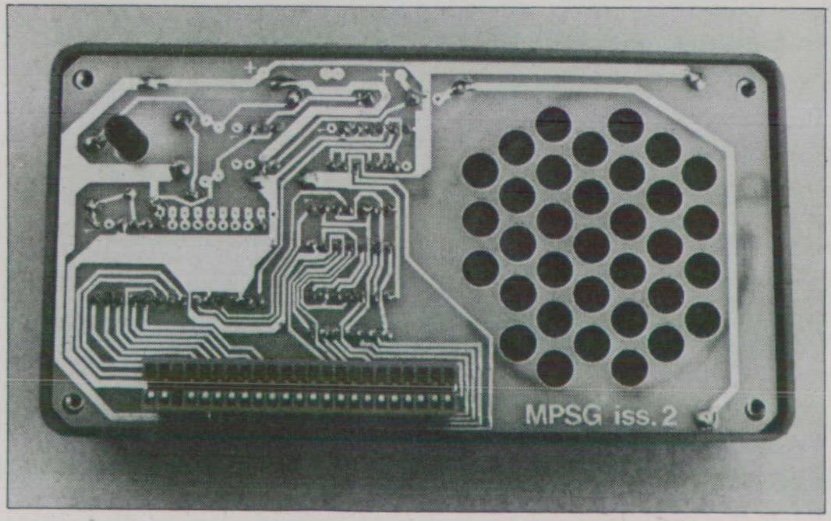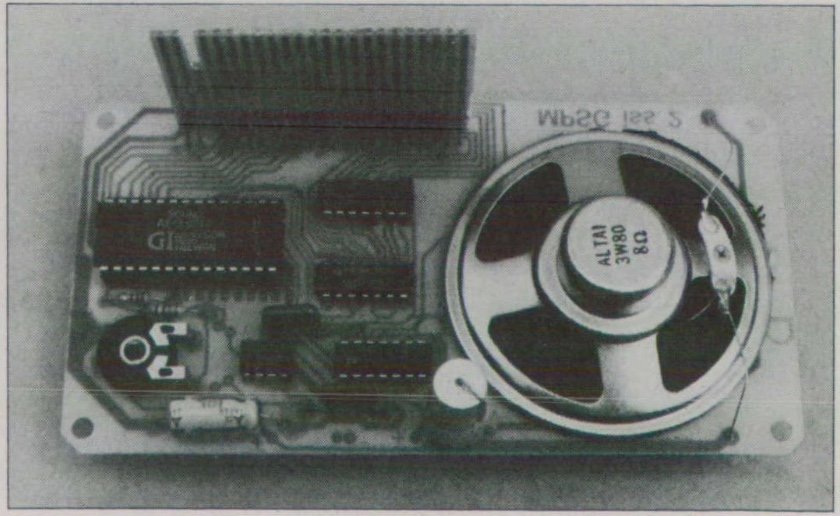Authors
Publication
Pub Details
Volume: 3 Issue: 6
Date
Pages
The Bi-Pak ZON promises a “huge range of possible sounds.” It certainly has great potential, but that potential is not so easily realized.
A Hardware Standpoint
The ZON is a small unit (2″ x 3″ x 5 15/16″) with a built in speaker, a manual volume control, and an expansion port in its back. It plugs into the expansion port of your ZX/TS computer. However, four hardware questions need to be raised.
1 ) The slot guide notch in the rear port was so narrow that my RAM pack slot pin remained stuck in the ZON. A small knife easily widens the notch, but it should have been sized properly to begin with.
2) With the TS2040 printer in the lineup, the overheating was so severe that program crash occurred, sometimes after only a few minutes of use.
3) The ZON’s printed circuit board, a glass expoxy board with excellent etching and plating, is only 1/32″ thick. This is flimsy enough to be susceptible to damage from something as simple as a hurried insertion into the computer.
4) The circuit designers, evidently unaware of the Sinclair decoding scheme for the I/O ports, unnecessarily tied up all but one of the computer’s eight ports. The documentation warns that the use of the ZON with any other I/O mapped device is not guaranteed.
The saving grace, technically speaking, is that the sound chip is state of the art.
A Users Viewpoint
While the documentation gives a lot of information, it is lacking in quantity and clarity. For example, in one place “period” refers to the duration of a sound while later it used interchangeably with “pitch.” A formula is given for generating a tone based on its frequency, but only the frequency for middle C is supplied.
The sample programs for sounds such as a gunshot, a laser, a whistle, and bells give a better idea of the programming methods than the instructions. One excellent short program lets you load the registers repeatedly to experiment to develop a particular sound.
Thirteen registers control pitch, envelope, tone or noise, and channel volume. Loading these registers is cumbersome, as a loading routine has to be executed for each register and every change. Although this is usually possible at an acceptable speed, entering the program is tedious. Each register and its contents must be identified by LET statements with a GOSUB for every load.
A machine code loading routine is stored in an initial REM statement. A nine line, six variable Basic routine to POKE values into some of the REM reserved addresses is recommended as the first nine lines of any program. However, except for the initial REM, the Basic routine is easily pared down to a four line, three variable subroutine that can be placed at any convenient program line.
The one major drawback of the ZON is that some sound effects are possible only in FAST mode. This may require sacrificing your display. The sounds that do not work in SLOW are mostly explosions and tones which should change rapidly and smoothly in pitch, e.g., the whistle of a falling bomb.
The ZON also lacks an envelope to give a single rise to maximum with a drop back to zero. This is just what you need for a dragon roar. Using the next best envelope gives about the same sound as the dragon in the Atari 2600 “Adventure” cartridge: good, but not great.
The limitations of the ZON will probably be considered in the same way that ZX/TS limitations are: a challenge to be cleverly programmed around. It is likely that the ZON will be forgiven its technical shortcomings, tedious programming, and confusing documentation the first time you turn your keyboard into an organ or hear the aliens fly across your screen.

